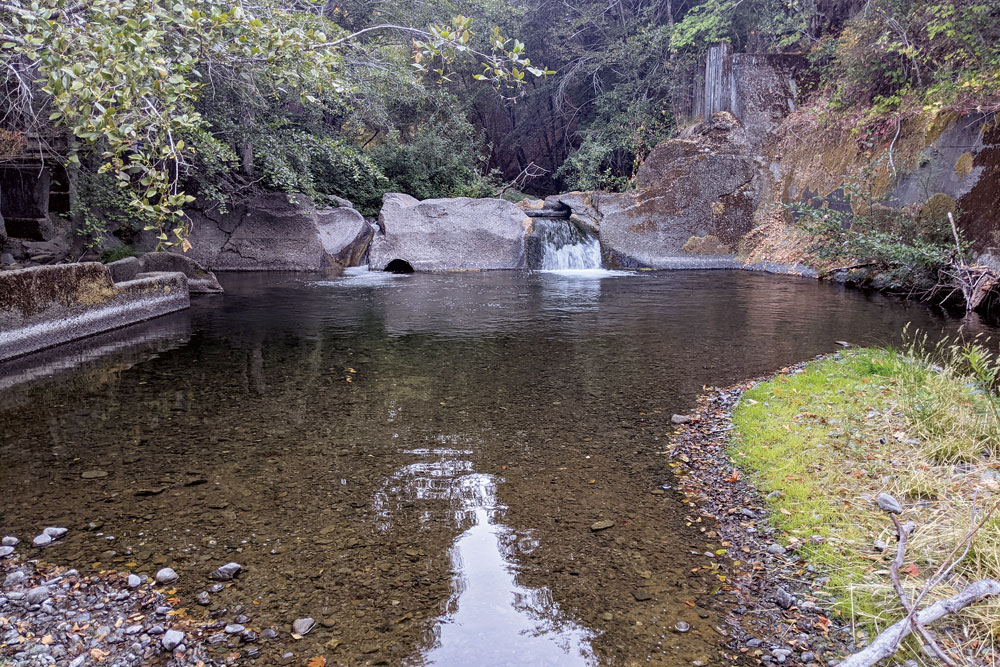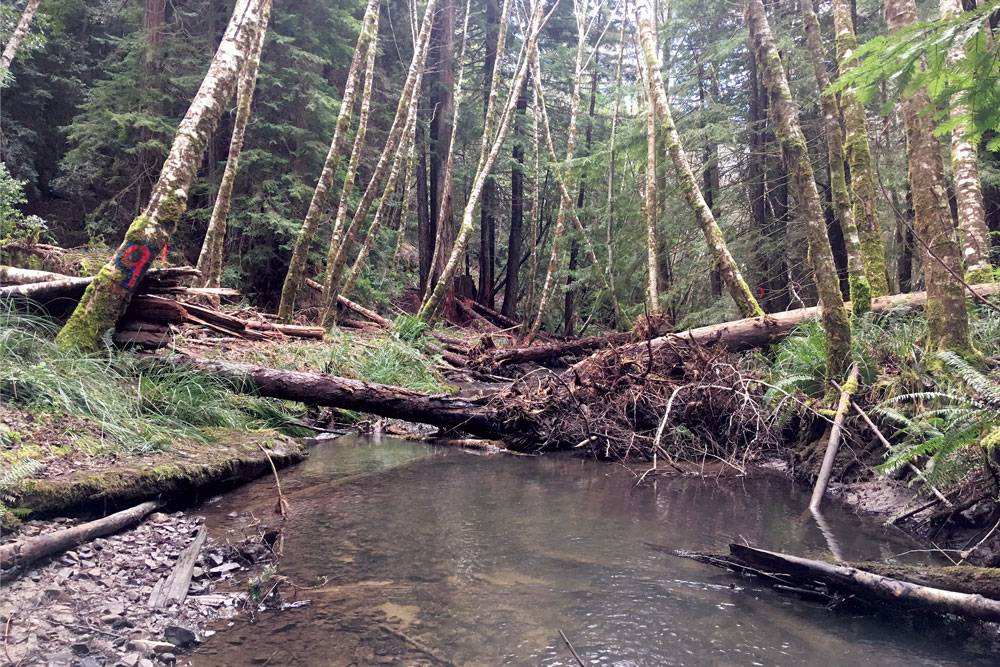24th Annual Coho Confab on the Navarro River

Evolving Strategies to Enhance Coho Salmon Habitat
September 9-11, 2022
Salmonid Restoration Federation
Salmonid Restoration Federation (SRF) is coordinating the 24th Annual Coho Confab that will take place September 9-11 in the South Fork Eel River watershed. This year’s Coho Confab will be held at Rangjung Yeshe Gomde Buddhist Retreat Center which is a forested sanctuary at the confluence of Cedar Creek and the South Fork Eel watershed. This is the perfect tranquil location to safely convene in person while we ease out of COVID restrictions. This will largely be an outdoor event.
The Coho Confab is a field symposium to learn about watershed restoration and techniques to restore and recover coho salmon populations. The Confab provides an ideal opportunity to network with other fish-centric people and to participate in field tours that highlight innovative salmon restoration practices. This year, SRF is collaborating with several groups to produce this educational event including California Department of Fish and Wildlife, Cal Trout, NOAA Fisheries, Stillwater Sciences, Eel River Watershed Improvement Group, Trout Unlimited, Pacific Watershed Associates, and other restoration partners.
The Coho Confab will open Friday evening, September 9th with a community dinner and inspiring orientation presentations. Darren Mierau of Cal Trout will present on the status of Eel River Dam Removal and the exciting Cedar Creek Barrier Removal project. Gabriel Rossi will give a talk titled “Understanding and Recovering the Drivers of Salmon Productivity and Resilience in the South Fork Eel River.”

Field tours will include a tour of the Cal Trout Cedar Creek Barrier Removal project that will be under construction and will open up nine miles of Chinook, coho, and steelhead habitat in this significant cool water refugia creek. There will be a full-day tour of the Angelo Reserve Eel River Critical Observatory that is a multi-disciplinary research collaborative that studies hydrologic processes from the tree tops to bedrock. This tour will, “focus on watershed hydrology—following a raindrop through the critical zone, and showing folks with tree and vadose zone monitoring equipment at the Reserve and end with a discussion of the “consequences” of that hydrology on salmon,” Gabe Rossi, UC Berkeley post-doctoral student.
Other field tours include a 4-mile hike along Anderson Creek on the Redwood Forest Foundation property in northern Mendocino County to observe five phases of large wood loading that includes both equipment installed and direct falling techniques and three phases of inner gorge and streamside road decommissioning. During the hike participants and tour leaders will discuss past watershed disturbances, their impacts on watershed processes, and the bio-fluvial-geomorphic conditions that have resulted from these disturbances as well as strategies to identify, characterize, analyze, and mitigate watershed scale disturbances with a focus on surface water hydrology, riparian ecosystem functions, stream corridor sedimentary architecture, and of course fish habitat. This tour will be in a very remote part of Mendocino County and last all day.
Things we can guarantee on the Anderson Creek tour
(1) you will be tired at the end of the day and perhaps a little scratched up, (2) you will see abundant juvenile coho throughout the tour, (3) You will leave with a more nuanced view of watershed scale disturbances and their collective impacts on aquatic habitat, (4) you will develop new wood loading strategies that you can bring back and employ within your watershed, (5) You will be able to review several phases of wood loading and observe how our strategies changed with increases in knowledge and changes to existing reach scale conditions, (6) Lastly you will be subjected to a deep discussion on geologic phenomena (regional tectonics, vertical land motions, sea-level-rise, sediment budgets) and how these drive the distribution and quality of salmonid habitat in Northern California. This tour is not for the faint-at-heart and will require participants to be physically and mentally durable. We may even see bigfoot!
Workshops will include instream flow initiatives. The South Fork Eel River is considered one of five priority tributaries for flow enhancement in California and several planning projects are underway to improve flows in critical tributaries of the South Fork Eel. Additionally, the Confab will feature on Open Forum on the Salmon Habitat and Restoration Prioritization (SHaRP) process that was launched in the Eel River to help create a roadmap for coho recovery.
Registration and the full agenda for the Confab will be available later this spring.
For more information: www.calsalmon.org
